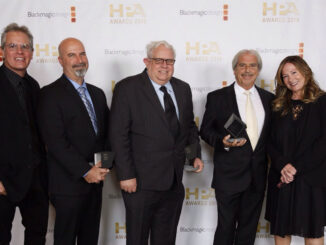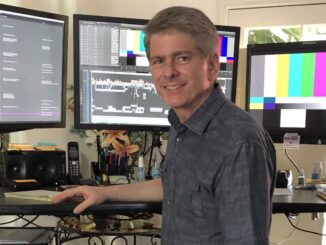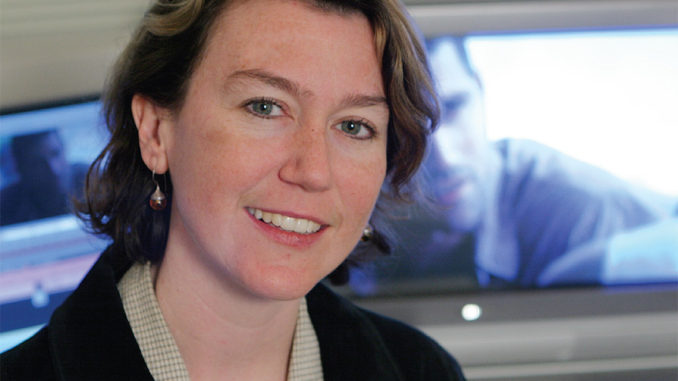
by Debra Kaufman • portraits by Gregory Schwartz
The 2005-2006 TV season is well underway. While dramatic episodic shows seem to be the genre of the moment, the “drama” isn’t only transpiring on the screen–there’s a fair amount of conflict occurring in the post-production suites as well. CineMontage spoke to half a dozen editors working on this season’s leading episodic dramas, “dramedies” and reality shows to find out what their challenges are, and how technology, trends, budgets and schedules are impacting the editor’s job.
“Tag-team assisting does not solve the problem of long hours if there is simply too much work for two assistants.” –Sarah Boyd
We spoke with Christopher Cooke, ACE (Night Stalker), Kevin Ross (Killer Instinct), Briana London, ACE (Grey’s Anatomy), Sarah Boyd (Lost), Paul Karasick (Supernatural), Pam Malouf (The Apprentice: Martha Stewart) and Tod Modisett (10 Items or Less, a pilot). Overall, their consensus is that the Fall 2005 season is—so far—looking good.
“Most of my friends who are editors have been consistently working,” says Karasick. London, who does both drama and sitcom work, says that this is the year of the drama, although she notes that the relative popularity of genres is a constant cycle. “In drama, at the moment, it’s working out,” she adds. “I’m seeing a lot of work. Everyone I know is employed, which is positive.”
Cooke agrees that it’s a great season for dramatic episodic television–but notes that all job prospects are dependent on “maintaining a good network with directors and producers as well as our editing colleagues. The truth is, we’re always near unemployment,” he says. “It’s just a cancellation away.”
More shows are posting in Los Angeles, according to London, who says she’s not seeing as many shows that shoot in Canada stay north of the border to edit. “They’re not getting the tax breaks like they used to,” she says. “If they’re shooting in Vancouver, they’re posting in LA, which is a happy thing!”
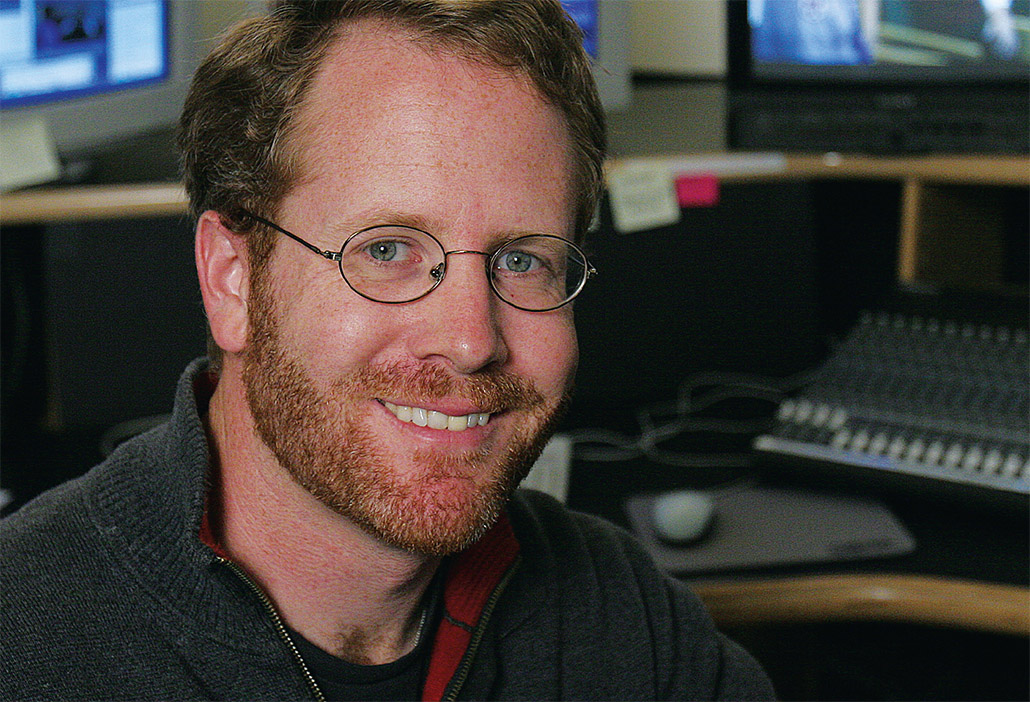
“If you see something that bothers you, do your best to fix it and not assume that someone downstream is going to fix it.” –Tod Modisett
Malouf reports that the reality genre is booming. “I have more work offers than in scripted television,” she says. “The pay is high, the hours are great, and the only downside is that most of reality television is non-union–yet it makes up one-third of the top 25 shows, all the rest of which are union.”
In another positive trend in Hollywood, three Mark Burnett Productions shows (The Apprentice, The Apprentice: Martha Stewart and Rock Star: INXS) were recently unionized—as was another reality show, Extreme Makeover: Home Edition–a step applauded by others in the reality genre.
Modisett notes, however, that the number of editing jobs doesn’t always translate into a good paycheck. “I think there’s a lot of demand for editors,” he says. “But not a lot of really pricey work.”
Television shows have become more complex, claim most of the editors. “There are really no one-camera shows anymore,” notes Cooke. At the same time, the twin challenges of tighter schedules and reduced staff are a challenge for nearly everyone working in television. “Unfortunately, at times, we have had to work on shows with two-editor rotations and unrealistic schedules,” adds Karasick. “While it is certainly possible to accomplish, it simply puts the work of three onto two for no extra cost except the extra burden on the editor.” The justification for this, according to him, is that, “Since the schedule is accelerated and the show will be locked early, you’ll have an editor being paid to do nothing! And you can get rid of the extra Avid and assistant too,” he adds. “The cost of this penny-wise decision is great. Time to consider, time to debate and refine is the exact costs of accelerated schedules.”
The reduction in staff is pervasive, causing hardships in the edit suites. “You still have to make your deadlines and the expectations from the networks and studios that you’ll meet those deadlines,” London says. “With reduced staff, you have to figure out where the time is coming from. It’s hard on everyone, especially the assistants.”
The biggest change has been from a three-editor/two assistant rotation to a two-editor/one-assistant rotation. “There’s a special working relationship that transpires between an assistant and an editor and things fall between the cracks if the assistant has to be involved in more than one episode with more than one editor at the same time,” London explains. Karasick points out that the assistant is so overwhelmed with technical responsibilities that there’s no real time for involvement on the episode or cutting. “Assistants are so busy digitizing, outputting, making lists and so on, that they sorely lack the freedom to sit, learn, observe and practice the art of editing,” agrees Ross.
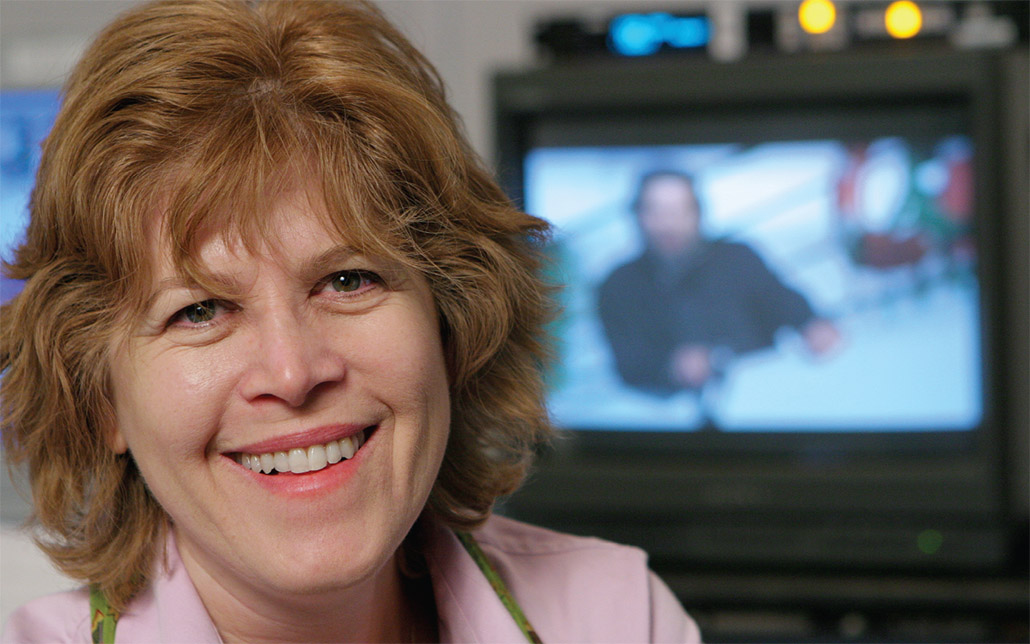
“If they’re shooting in Vancouver, they’re posting in LA, which is a happy thing!” –Briana London
“Gone are the days of sitting with the editor, handing trims when asked and giving their feedback when asked. Much of an assistant’s ability to practice editing comes on his or her own time. That’s not fair to them, and it will hurt our profession in the future.” From the editing room at Lost, Boyd notes that although “the new trend of staggering assistants’ hours to avoid overtime is a good idea for budgetary reasons, it’s a bad idea for assistant continuity. Tag-team assisting does not solve the problem of long hours if there is simply too much work for two assistants on a three-and-two rotation.
“A certain amount of tag-team flexibility—like for dailies or covering for a doctor visit—makes sense,” she continues. “But as a rule, one assistant should be responsible for one show; otherwise you might have assistants, late at night, prepping an online or cutting in visual effects for a show they don’t know inside and out.”
Cooke points to the difficulty of cutting today’s much more complex shows—laden with visual effects for example—with fewer people. “It is short-sighted to cut post staffs to save money,” he says. “Editorial is the cheapest part of the process and can have a large effect for the amount of money spent. Often we can save time and money by making shows work without re-shoots or rewrites.” Editors are also finding that their jobs are expanding to include new tasks. “Certainly editors are adding more music and sound effects to their cuts than ever before, and creating nice offline mixes for screenings for the executives,” says Malouf. “The music and effects I cut in are being given to the sound and music editors in the form of OMFs [Avid’s standard file format], which obviously can save them time in the cases where they don’t choose to replace them. But nowhere have I seen the jobs [with professional sound mixers] overlapping.”
Ross observes that because nonlinear editing systems enable editors to do more, they are expected to do more than ever before. “Not only should we have a stellar picture cut, but we’re expected to have sound effects, ambiences, temp visual effects and temp music throughout the entire cut—two days after wrap,” he says. “And not only should it be in there, but we are critiqued on our choices!
“We’ve taken away fellow union members’ jobs, such as sound assistants,” he continues. “And we still deliver all this in the same or less amount of time than back in the days of film and Moviolas. The sophistication of our delivered edits are impressive, but if we decided to deliver cuts without these extra elements, we wouldn’t be viewed as adequate editors.”
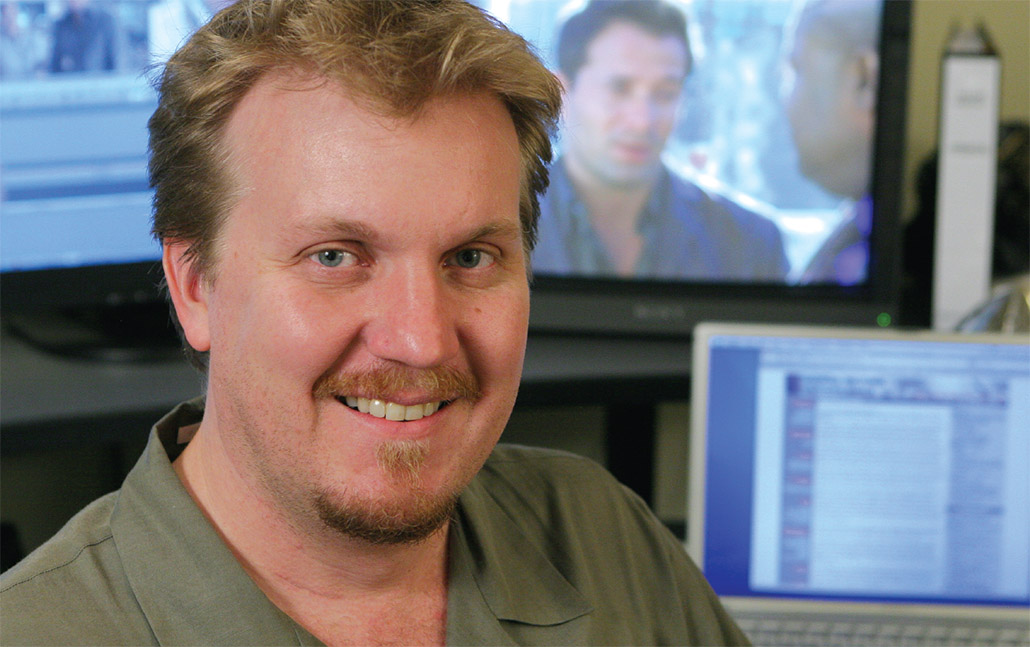
“Editors need to be vocal, not be afraid to voice their opinions or take credit for the solutions.” –Kevin Ross
Boyd notes that the tightening of delivery and air dates is due not just to all the advances in editing technology (ie, how fast an editor can edit and do temp music and effects), but also to delivery technology–internet streaming and DVD dubs. “Where one once had to wait for next-day Federal Express deliveries for producers in remote locations to review cuts, with the introduction of digital dailies, iChat and Media.net [the high-speed online services used by many TV shows and feature films to send review and approval files, dailies, etc.], one can now get same-day notes,” she explains. “Also, instead of sending out studio dubs overnight, or using a huge dub rack of VCRs to make copies, DVD dubs are now made in a matter of minutes.”
Some editors—especially those who grew up with the added functionalities of nonlinear editing systems—relish the chance to add an extra signature to the cut. “Given the compression of the schedule and the money, it’s in your best interest that, if you see something that bothers you, you do your best to fix it and not assume that someone downstream is going to fix it,” says Modisett. “I enjoy having the ability to tell the story with as many levels as possible and take pride in presenting the most complete version of the show as I can,” Karasick explains. “With the schedules we face today, these layers must be added in during the early part of the process and improved along with the picture. While this might be considered above and beyond the call of duty, I consider it an opportunity to show what I can bring to the table in terms of getting the best story on the screen.”
Technology is also making an impact in the editing room–most frequently with shows that shoot in high definition and/or finish in the new broadcast format. Though the occasional TV show has had a 2K digital intermediate, that remains a rare occurrence. Malouf notes that with the FCC mandate for broadcast networks to go alldigital by 2008, production companies are “seriously evaluating the pros and cons of going to High Def.” “The only way it affects me as an editor is that if a show is to be broadcast in 16:9 high definition and 4:3 standard definition, the picture framing and cuts need to be adjusted for the two screen sizes,” she says. Cooke reveals that on Night Stalker (where his co-editors are Marta Evry and Sunny Hodge), they’re using the new Panavision Genesis digital camera as well as Avid version 12.0.8, with Unity file sharing on the Mac G4 OS version 10.2.6. “In truth, the technology ultimately doesn’t change the way I work,” he says. “Every time the technology changes, some things get fixed and some things get broken. You learn work-arounds and try to keep your workflow moving—whether it’s a power surge, computer crash or Moviola light burn-out.”
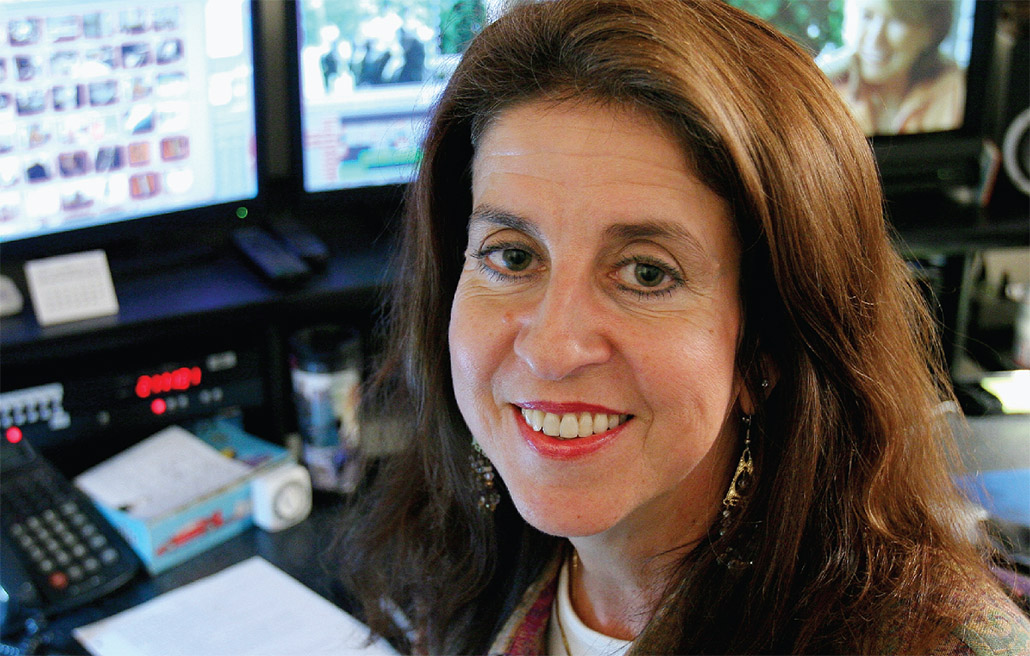
“The biggest challenge has always been delivering the best possible picture and story in the shortest amount of time.” –Pam Malouf
A few editors have already had experience working in High Def. London used to work on Huff, which is shot in the increased resolution format. “It worked out beautifully,” she says. “It was a lot of extra dailies, which is why we needed more help. But it didn’t affect me in any other way. The approach to editing is the same whether it’s HD or 35mm.”
Perhaps the most frustrating part of being an editor is to hear the profession called “an everyday skill,” now that anyone can buy a laptop and Final Cut Pro. “It’s like saying, `Now we all have word processors, so we can all write novels,'” explains Modisett. “Not everyone’s a novelist. And not everyone’s an editor.”
Nonetheless, Modisett believes that if a director can cut, he should, since it helps to provide “a perspective on what he should be shooting.” Cooke hopes that the availability of editing software to a larger group of people will increase the status of professional editors, as the general public becomes “more aware of what we do and how well we do it.”
But that’s not everyone’s perspective. The perception of editing as an “everyday skill” rankles many editors, who interpret it as a lack of respect, along with the tight schedules and reduced staff. “We’re below-the-line technicians to a lot of the studio and network execs,” says Ross. “Our contribution is somehow a reflection of the editing system. If this weren’t true, then we’d get the same respect as the other professions. Editors need to be vocal, not be afraid to voice their opinions or take credit for the solutions. Let’s continue to keep our place on the creative team and not let our position become viewed as an `everyday skill.’ We should be responsible for maintaining our status.”
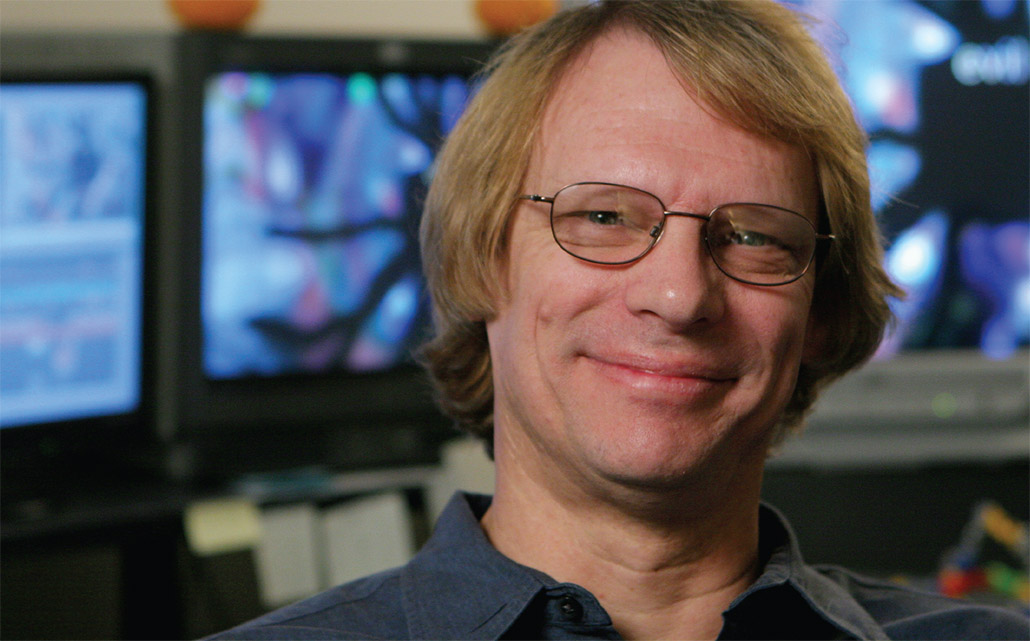
“Every time the technology changes, some things get fixed and some things get broken.” –Christopher Cooke
Despite the challenges, editors are still happily engaged in the specific challenges of the shows they’re working on. For London, that means keeping Grey’s Anatomy active pacewise. “We have strong scripts, which I appreciate,” she says. Another challenge is the music, which features new, innovative, breakout bands. “It’s fun to find the music and place it for the appropriate emotional high point of the scene,” she adds.
Night Stalker is not a police procedural or a medical show,” says Cooke. “We don’t have a soap opera-based storytelling theme. Each week we try to tell a creepy, scary or unusual story with feature film aesthetics and a fun-loving touch. Our shows don’t always have a happy ending—a lot of times they’re open-ended. Yes, this asks a lot of the viewers, but it makes my job more interesting and compelling. It’s fun to scare people, and I keep stretching.”
“Editing is subjective, so the biggest challenge has always been delivering the best possible picture and story in the shortest amount of time,” says Malouf. “If we had infinite time, we could make infinite minute changes. As the saying goes, `You abandon works of art, you never finish them’.”
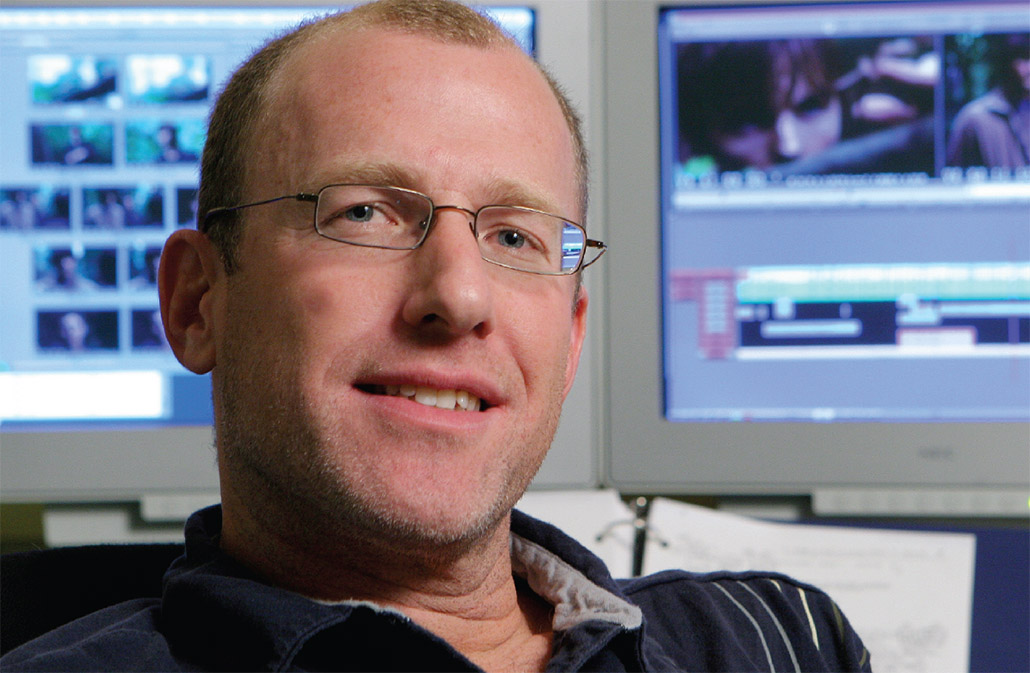
“Unfortunately, at times, we have had to work on shows with two-editor rotations and unrealistic schedules.” –Paul Karasick
Ross feels that “all the shows I’ve cut on have always strived to push the edge of what we can do creatively, editorial-wise.” But if shows don’t catch on with audiences in time, even the most critically acclaimed ones won’t become a hit. “That’s terribly disappointing,” he adds. “But as long as you know you’ve done the best work you could do, and you are proud of your product, you can be satisfied. Besides, there’s always the hope that audiences will find it on DVD.”


